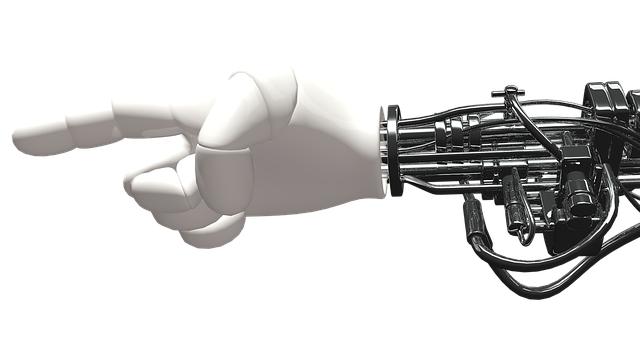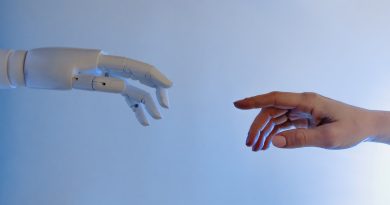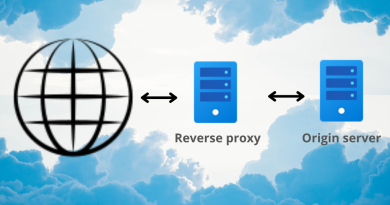Top 10 Programming Languages for Robotics
Robotics is an increasingly popular field, with more and more people looking to get involved in this high-tech industry. However, one of the first decisions that anyone looking to get into robotics must make is what programming language they should learn. This can be a difficult decision, as there are many different languages out there, each with its own advantages and disadvantages. In this blog post, we will take a look at the top ten languages for robotics programming to help you decide which one is right for you.
Why to learn robotics?
Robotics offers a unique and exciting way to learn programming. By its very nature, robotics is an interdisciplinary field, which means that it draws on knowledge from a variety of different fields, including programming, engineering, and electronics. As a result, learning robotics can be a great way to gain exposure to a wide range of programming concepts. In addition, because robotics relies so heavily on programming, it is an ideal way to learn how to code.
How to learn robotics?
There are many resources available for those interested in learning robotics. For example, there are a number of online courses such as Udemy or PluralSight that can introduce you to the basics of robot programming. In addition, there are several books that provide an overview of the field of robotics and some of the most popular programming languages used in robot development. Finally, there are a number of community-based resources, such as Reddit and discussion groups, that can provide support and guidance as you learn robotics. With so many resources available, there is no excuse not to start learning today!
Best programming languages for robotics
1. C++
C++, one of the most popular programming languages, is a powerful object-oriented language that many different fields are using, including robotics. One of the main advantages of C++ is that it is fast and efficient; this makes it a good choice for applications where speed is important, such as in time-critical systems or real-time systems. C++ also has a wide range of libraries available, which can be very helpful for robotics programming. However, one downside of C++ is that it can be difficult to learn
2. Python
Python is a high-level interpreted language that has become increasingly popular in recent years. It is easy to read and write, making it a good choice for computer programs. Python also has a wide range of libraries available, which can be very helpful for robotics programming. However, one downside of Python is that it can be slow; this language may not be the best choice for applications where speed is important.
3. Java
Java is a versatile language that can be used for many different purposes. It is a platform-independent, meaning that programs and same code written in Java can run on any operating system. This can be very advantageous when developing robotic systems, as they often need to be able to run on multiple platforms. Additionally, Java has a wide range of libraries available as well as java virtual machine where you are able to program robots. The Java Virtual Machine interprets the code instructions during runtime, making it a fast and secure language with specialty features for Robots. Together with C++ are considered as very mature programming languages. However, one downside of Java is that it can be difficult to learn compared to other programming languages.
4. MATLAB
MATLAB is a commercial numerical computing environment and programming language that is widely used in engineering and scientific applications. It is one of the earliest programming languages. It includes built-in support for many different types of data visualizations, making it easy to develop graphical user interfaces (GUIs) for your robot programs. In addition, MATLAB’s Simulink tool can be used to develop and simulate complex robot control systems before implementing them on hardware. However, MATLAB code can be slow to execute compared to code written in compiled languages such as C++ or Java.
5. LabVIEW
LabVIEW is another commercial numerical computing environment developed by National Instruments. It includes support for data acquisition and control systems, making it especially well-suited for developing robotic systems that interface with the real world. However, like MATLAB, LabVIEW code can be slow to execute.
6. Hardware Description Languages (HDLs)
Hardware Description Languages, or HDLs, are one of the best programming languages for robotics. HDLs are a powerful tool for specifying the behaviour of digital circuits. They can be used to describe both the functionality and the timing of a circuit. This makes HDLs an ideal choice for programming robotic devices, which often need to respond quickly to changes in their environment. In addition, HDLs are often used in conjunction with Hardware Verification Languages (HVLs), which can help to verify that a circuit is functioning correctly. As a result, HDLs are a versatile and powerful tool for programming all types of robotic devices.
7. Microsoft C#/.NET
Microsoft C#/.NET is a proprietary programming language provided by Microsoft and is one of the best programming languages for robotics. It is a powerful, object-oriented language that enables developers to create sophisticated applications. Additionally, Microsoft C#/.NET has excellent support for hardware and software interfaces, making it ideal for developing robotic systems. In addition, Microsoft C#/.NET is also easy to learn and use, making it a good choice for beginner programmers. Microsoft C#/.NET is an excellent choice for developing robotic systems due to its powerful programming capabilities and ease of use.
8. Lisp
Lisp is often hailed as one of the best programming languages for robotics. Lisp is a dialect of the Lisp family of computer programming languages, originally developed by John McCarthy in 1958. It is a versatile language that can be used for a wide range of applications, including artificial intelligence, natural language processing, and machine learning. It is also well-suited for robotic applications due to its powerful data structures and rich semantics. In addition, It is renowned for its extensibility, which allows programmers to easily add new functionality to the language. As a result, Lisp is an excellent choice for developing sophisticated robotic systems.
9. Robot operating system (ROS)
ROS is a set of software libraries and tools that help you build robot applications. From drivers to state-of-the-art algorithms, and with powerful developer tools, ROS has what you need for your next robotics project. It’s no wonder that ROS is one of the best programming languages for robotics. With ROS, you can easily control hardware, create new algorithms, and maximize reuse across your team’s projects. What’s more, the ROS community is constantly expanding, with new packages and features being added all the time. So, if you’re looking for a powerful and flexible programming language for your next robotics project, look no further than ROS.
10. Visual Programming Language (VPL)
VPL is a language that uses graphical symbols instead of text to represent commands and functions. While VPLs have been around for some time, they are becoming increasingly popular in the field of robotics due to their user-friendly interface and ability to create complex code. Many of the best robotics programming languages, such as ROS and Move it, are based on VPLs. Visual programming languages are also popular among hobbyists and students who are interested in learning to code but may be intimidated by traditional text-based languages. Overall, VPLs offer a number of advantages for both experienced programmers and those just starting out.
Conclusion
Choosing the best programming language for robotics depends on your individual needs and preferences. If you are looking for a fast and efficient language, C++ may be the best choice for you. If you are a beginner or are looking for an easy-to-use language, Python may be the better option. Finally, if you need a versatile and platform-independent language, Java could be the right choice. Whichever language you choose, make sure to do your research so that you can get started on your journey into the exciting world of robotics programming!



